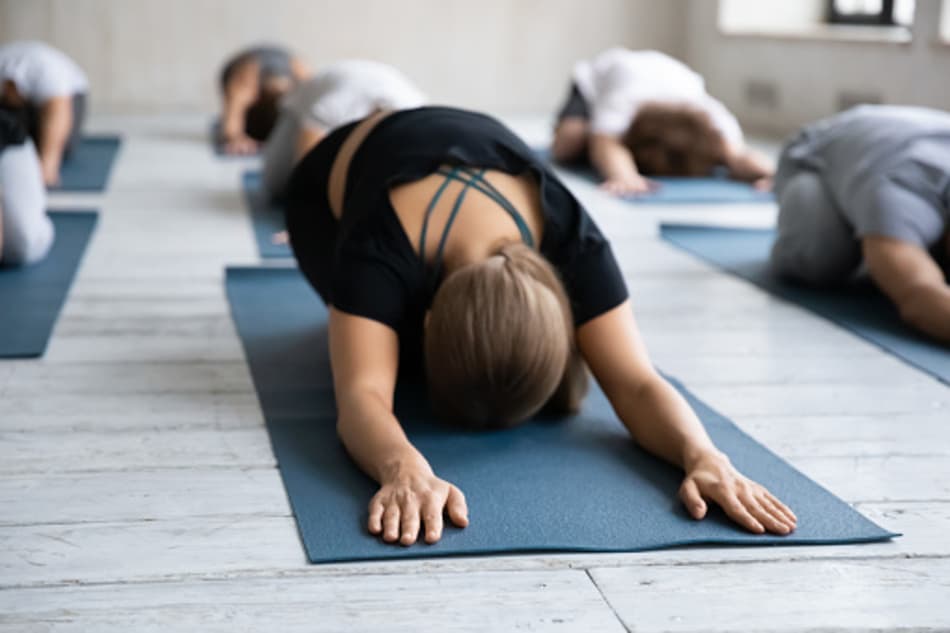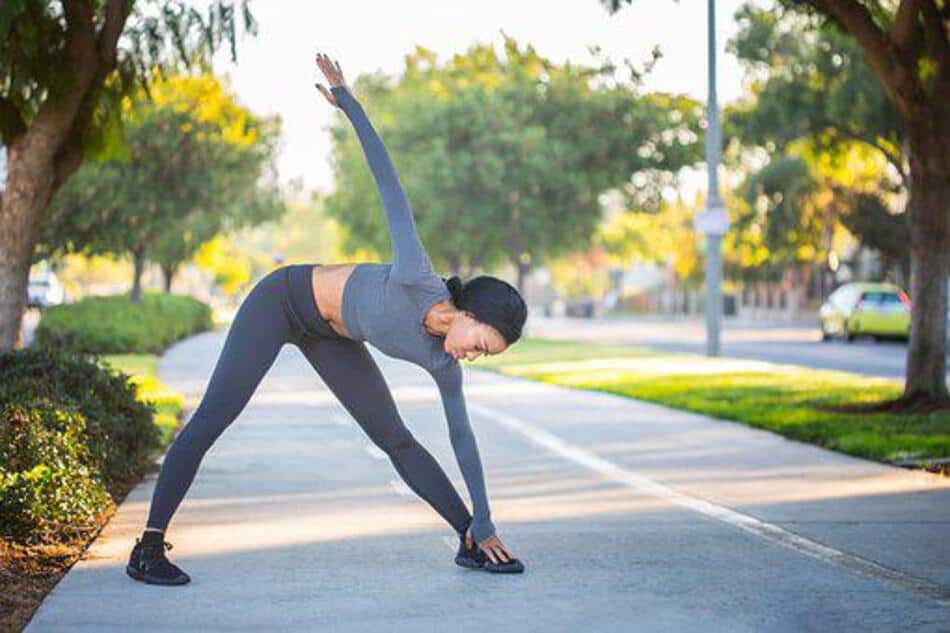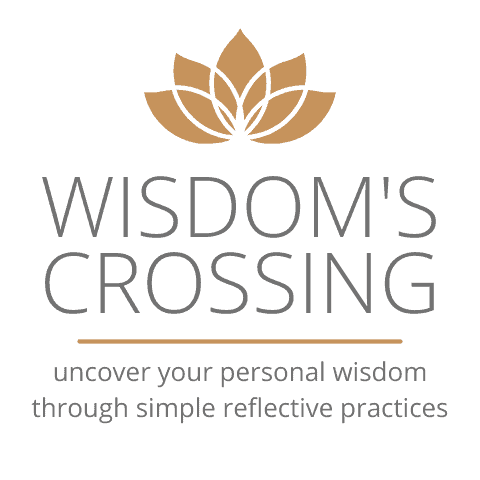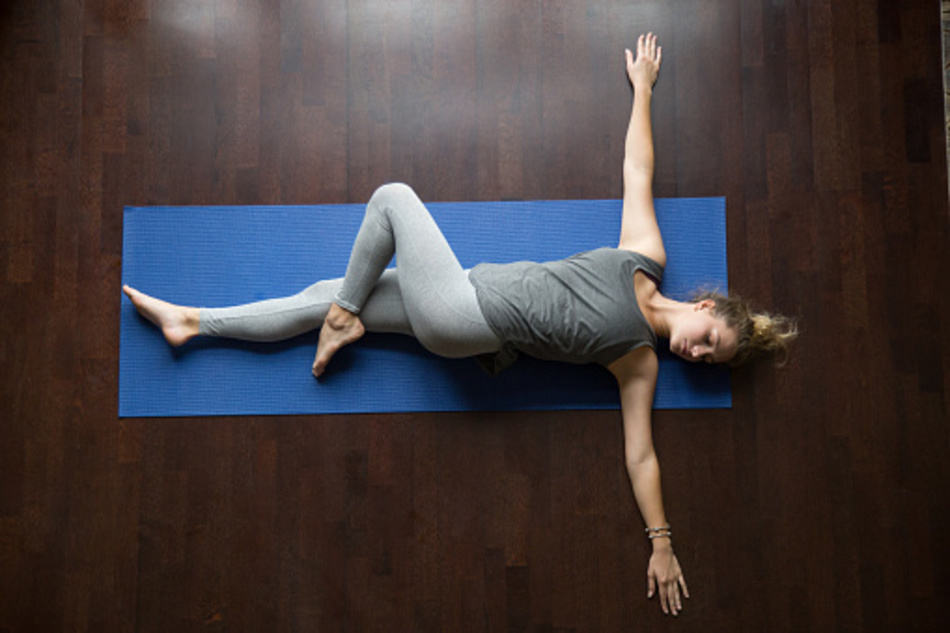There are a lot of different opinions out there about restorative yoga vs stretching. Some people swear by restorative yoga, while others think that stretching is the only way to go. So, which is better? In this article, I will explore the pros and cons of each type of exercise, and you can decide for yourself which one is right for you!
So, which is better restorative yoga vs stretching? If you are looking for a way to relax and reduce stress, restorative yoga may be the better option for you. If you are looking for a way to improve your flexibility and prevent injuries, stretching may be the better option for you. Ultimately, the decision is up to you!
What Is Restorative Yoga?
Restorative yoga is a type of yoga that is focused on relaxation. The poses are usually very gentle and are meant to be held for long periods. This type of yoga can be very beneficial for people who are looking to reduce stress and tension in their bodies.

Types Of Restorative Yoga
There are many different types of restorative yoga, each with its unique benefits. Some of the most popular types include:
- Yin Yoga: Yin yoga is a slow-paced type of restorative yoga that focuses on lengthening the connective tissues and promoting stillness in the mind.
- Restorative Yoga with Props: This type of restorative yoga uses props such as blankets, bolsters, and straps to support the body in various positions.
- Chair Yoga: Chair yoga is a great option for those who have difficulty getting down on the floor or who need a little extra support.
- Gentle Yoga: Gentle yoga is perfect for beginners or those looking for a more relaxing practice.
Related: Vinyasa vs Bikram Yoga: Which Is Better?
Benefits
- One of the main benefits of restorative yoga is that it can help to improve your flexibility. The gentle stretching that you do in restorative yoga can help to lengthen your muscles and increase your range of motion. This can lead to better overall mobility and fewer injuries.
- Another benefit of restorative yoga is that it can help to boost your immune system. The deep breathing that you do in restorative yoga helps to oxygenate your blood, which can help to fight off infection. The relaxation that you experience in restorative yoga can also help to reduce stress levels, which can further boost your immune system.
Disadvantages
However, there are some drawbacks to restorative yoga as well.
- One of the biggest drawbacks is that it can be quite boring. If you are someone who likes to move around and be active, restorative yoga may not be the right type of exercise for you.
- Additionally, restorative yoga can be quite challenging for people who are new to yoga or who have never done any type of stretching before. It is important to listen to your body and go at your own pace when doing restorative yoga poses.
What Is Stretching?
Stretching, on the other hand, is a type of exercise that can be done by people of all fitness levels. There are many different types of stretching, and you can tailor your stretching routine to fit your own needs and goals. Additionally, stretching is a great way to warm up your muscles before a workout or to cool down after a workout.
Types Of Stretching
There are four main types of stretching exercises:
- Ballistic stretching: This type of stretch involves bouncing or jerking movements. It’s not recommended because it can lead to injuries.
- Dynamic stretching: This type involves moving your body part in a controlled way through its range of motion. It’s a good way to warm up your muscles before exercise.
- Passive stretching: This type of stretch involves holding a position with another body part or an external force, such as a strap.
- Active stretching: This type of stretch involves contracting the muscle group being stretched while you move your body part through its range of motion. It’s also called isometric stretching.
Related: Kundalini Yoga vs Vinyasa: What’s The Difference?

Which Type Of Stretching Is Best?
The best type of stretching for you depends on your fitness goals and your current level of flexibility. If you’re just starting, dynamic and passive stretches are a good place to start. As you become more flexible, you can add active stretches to your routine. ballistic stretches are not recommended for anyone.
If you’re looking to improve your flexibility, static stretches are the way to go. Hold each stretch for at least 30 seconds and repeat it several times. For best results, do static stretches after a workout when your muscles are warm.
Benefits
- One of the main benefits of stretching is that it can help to improve your range of motion. By stretching your muscles, you can increase the amount that they can move. This can lead to better performance in activities such as sports or working out.
- Additionally, flexibility is important for overall health and well-being.
- Another benefit of stretching is that it can help to prevent injuries. When you stretch regularly, you are helping to lengthen your muscles and increase your range of motion. This can help to prevent strains, sprains, and other injuries.
- Stretching can help to improve your posture and alignment.
Disadvantages
There are some drawbacks to stretching as well.
- One of the biggest drawbacks is that it can be time-consuming. If you are short on time, you may not be able to fit a stretching routine into your schedule.
- Additionally, some people find stretching to be painful or uncomfortable. It is important to listen to your body and stop if you are feeling any pain or discomfort.
Also Read: Power Yoga vs Vinyasa Yoga: What’s The Difference?
Restorative Yoga Vs Stretching
When it comes to restorative yoga vs stretching, which is better? It depends on your goals. If you’re looking to improve flexibility, then stretching is probably a better option. However, if you’re looking to reduce stress and promote relaxation, then restorative yoga might be a better choice. Ultimately, it’s up to you to decide what works best for you. Try both and see what feels best!
So, there you have it! A brief overview of restorative yoga vs stretching. Which do you think is better? Let me know in the comments below! Thanks for reading! until next time
Bottom Line
Both restorative yoga and stretching can be beneficial for your health. It’s important to choose the right type of exercise for your goals and fitness level. If you’re just starting, dynamic and passive stretching exercises are a good place to start. As you become more flexible, you can add active stretches to your routine. Ballistic stretching is not recommended for anyone. Static stretches are the best way to improve your flexibility. Hold each stretch for at least 30 seconds and repeat it several times. For best results, do static stretches after a workout when your muscles are warm. Thanks for reading! Until next time.

